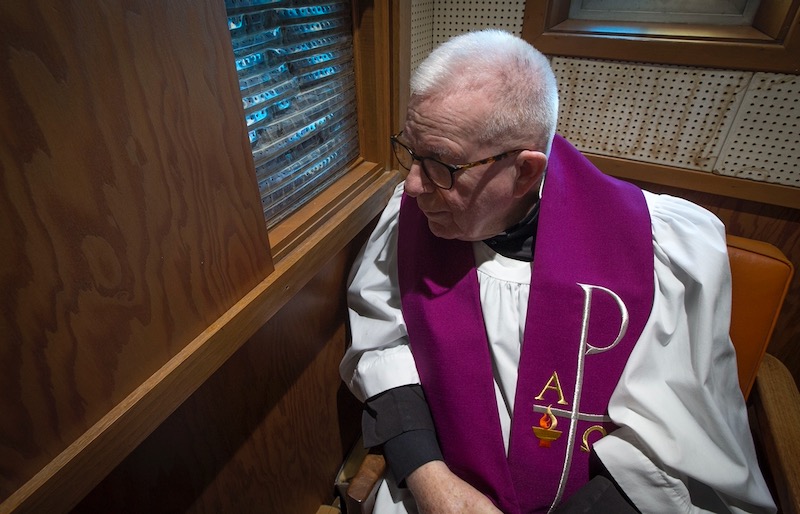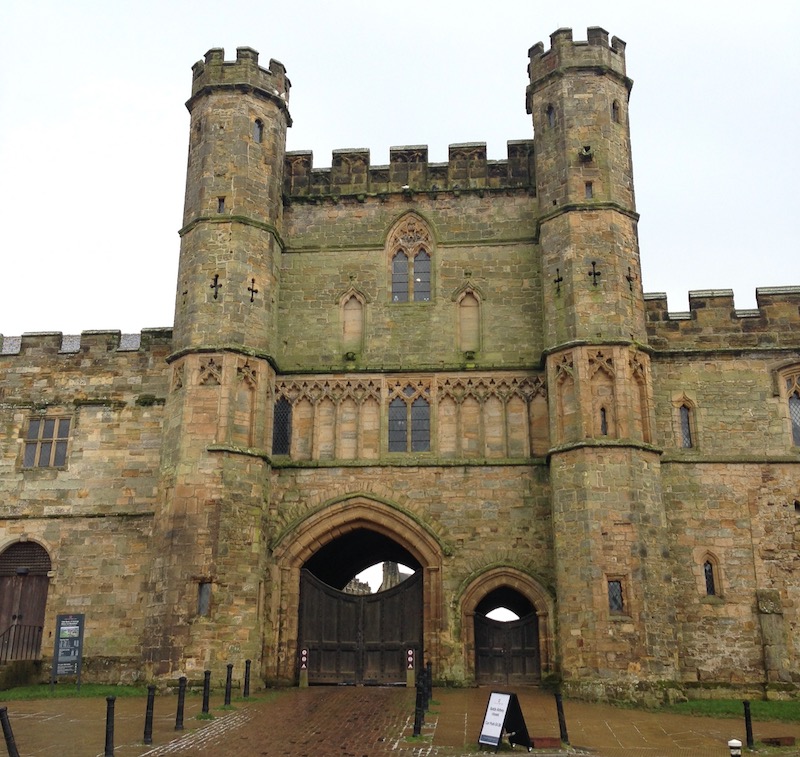Everyone, historians included, needs a bit of luck and a substantial piece of good fortune came my way several years ago when I came across a late medieval list of the sacred relics at Battle Abbey.
I’d like to claim that I discovered it among a pile of dusty, long forgotten parchments in an obscure archive. But no, it was actually hidden in plain sight. Its existence has been recorded in publicly available library catalogues since the 1920s. The first page, bearing the abbey’s medieval ownership inscription, has even been published on the web.
Battle, founded “on the very spot” where William the Conqueror won his great victory and the English crown in 1066, was one of the great monasteries of medieval England. A long line of distinguished scholars have devoted their careers to elucidating its history, from the bloody circumstances of its foundation through to its dissolution in 1538. For whatever reason, none had given the relic list more than a passing glance.
The Huntington Library in California, home to the manuscript since the 1920s, kindly supplied photographs of the list, or inventory. Written in Latin in an elegant blackletter script it covers two folios (four pages). A quick examination of its contents was enough to convince me that I’d struck nerd gold.
No more than thirty or so documents of this type survived the destruction caused by the English Reformation, so the Battle list, by its very rarity, was of intrinsic interest. On top of this, each of the 175 relics lovingly recorded by the fifteenth-century scribe provided important new insights into the history of the monastery and the life and beliefs of its Benedictine monks.
In keeping with a well-established medieval custom, the first relic in the list is a portion of wood from the True Cross, which is described as “the holy of holies”. This is followed by other relics associated with Christ’s life including a portion of the crib. Then come relics of the Virgin, such as cloth from her veil and wood from her bed. A host of saints are represented by bones, locks of hair, trimmings from beards and fragments of clothing. There are also portions of holy ground such as rocks from Calvary, so too eyebrow raising fragments of the Rod of Aaron and the Arc of the Covenant.
The list doesn’t provide any explicit information about the relics’ provenance. Nevertheless, there are sound reasons to believe that many had been at Battle since the time of its foundation by the Conqueror in the blood-soaked aftermath of the Battle of Hasting. The abbey’s own chronicle records that in 1087 the penitent William made a substantial deathbed donation of relics to the abbey, adding that these came from the treasury of the Anglo-Saxon kings whose kingdom he had seized. Approximately a third of the relics at fifteenth-century Battle do indeed have a direct comparator in late Anglo-Saxon royal relic inventories.
Further royal gifts augmented the collection. King John visited Battle in 1200, presenting the abbey with a portion of the Holy Sepulchre (Christ’s tomb) collected by his brother, Richard the Lionheart, a few years earlier while crusading in the Holy Land. Such a relic is indeed among the spiritual treasures listed by the late medieval scribe and occurs in a portion of the list that records accessions to the collection subsequent to the Conqueror’s initial donation.
Battle also seems to have acquired relics from other monasteries, including its own dependent priories. The one at Brecon was the likely source of a relic of St Almedha, a fifth- or early sixth-century virgin martyr whose veneration was focused on a sacred well in close proximity to the priory and whose relics are otherwise rare in medieval inventories. At least some of Battle’s six relics of St Nicholas, which included his hair-shirt and a finger bone, surely came from its priory at Exeter which was dedicated to that saint. Other relics of St Nicholas were likely obtained in 1089 when his remains were “translated” or moved from Myra, on the Mediterranean coast of what’s now Turkey, to Bari in southern Italy, an event described in some detail in a contemporaneous manuscript from the library at Battle.
The abbey’s fragment of the skull of St Thomas Becket, sliced off by murderous knights in Canterbury Cathedral on 29 December 1170, was surely brought to the monastery in 1175 when Odo, prior of Canterbury at the time of Becket’s martyrdom, was elected as abbot of Battle.
Monks of Battle also appear to have been active collectors of relics. There’s an unusual preponderance of Spanish relics in the Battle list. It’s therefore surely significant that in 1330, Abbot Adam de Kettling made the pilgrimage to the shrine of St James the Great at Compostela. He likely picked up the abbey’s relic of St Dominic of Silos (the only one known in medieval England) on the way, so too that of the mysterious “St Sancho, bishop” whose identity remains elusive.
Unsurprisingly, Battle possessed a relic of its titular saint, Martin of Tours. A fourth-century Roman soldier turned Christian conscientious objector, he founded the monastery at Marmoutier, the original home of the monks who settled at Battle. The saint’s feast on 11 November was celebrated at Battle with the utmost liturgical solemnity and splendour. It was also marked by the distribution of charity to the poor and with general merry-making. The abbey’s accounts from 1478, for instance, record the payment of eight pence “to a certain actor on the feast of St Martin in winter”.
Battle’s relics, including St Martin’s, were kept in what the late medieval scribe described as a “phylactery which is made from gold and shining gems”. The abbey’s late twelfth-century chronicle may even record its manufacture, noting that Abbot Ralph (1107-24) ordered the making of “a wonderful work of gold and silver set with precious jewels, to house the relics properly”.
In 1538, Battle’s spiritual and material treasures fell into the hands of Henry VIII. The relics were likely cast aside as tokens of popish “superstition”, the precious metal reliquary carted off to London to be melted down to fund Henry’s appetite for high living, ostentatious display and pointless foreign wars.
But the list survived. I’m sure I’m far from alone in thanking my lucky stars for that.



 Loading ...
Loading ...
What do you think?
You can post as a subscriber user ...
User comments (0)